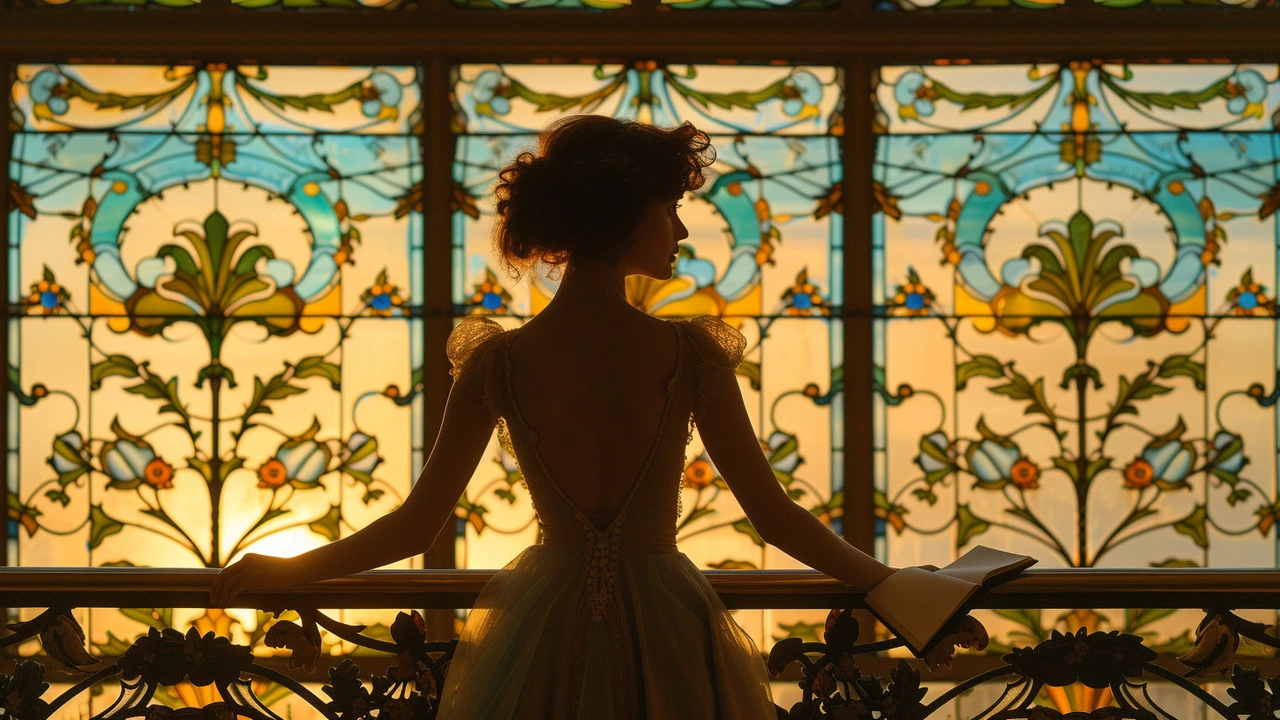Art Nouveau Architecture: Breaking Free from the Norm
 Aug, 2 2023
Aug, 2 2023
The Seeds of Rebellion in Architecture
The world of architecture wasn't always about sleek glass skyscrapers or wide open modern spaces. Oh, no! There was a point at the turn of the 20th century when architects decided to break from tradition. They were no longer looking to create structures "just as they were supposed to". They wanted to mold buildings that looked and felt like something out of a dream, and that's where Art Nouveau architecture springs forth from.
Just imagine, it's the late 1800s, and the architecture of the day is primarily quite staid and traditional. You've got your classic Greek, Roman, and Renaissance styles, all with beautiful, but largely predictable and uniform line work. Then, bam! Out of nowhere, along comes Art Nouveau, flipping the proverbial bird at the status quo. But this is not a story about rebellion without a cause. You see, Art Nouveau had a heart as well. At its core, it was an attempt to reconcile beauty with functionality, and artistry with practicality.
Whirls and Twirls: The Unusual Shapes of Art Nouveau
Art Nouveau buildings refused to go unnoticed. Have any of you seen a building that looked like it was having a passionate tango session with the wind? Long, curving lines, exuberant forms, and a whole lot of personality—it was like dance frozen in stone! These buildings looked more like natural beings than lifeless constructions. They were the belles of the architecture ball!
The architects imbued each design with sinuous lines and flowing contours that snaked around the building. I mean, have you ever heard of a "whiplash" line? That’s a term used to describe the curved, elongated lines you see in Art Nouveau designs. As my son, Harris, would say, "It's like the buildings got up and stretched after a long night's sleep!"
The Botanical Wonderland of Art Nouveau: Flowers, Vines, and All Things Divine
Nature wasn’t just an inspiration for Art Nouveau architects, it was their muse. They borrowed shapes, designs, and intricacies straight from Mother Nature herself, incorporating plant forms and other natural themes into the design of their buildings. From the tiniest ivy leaf to the colossal branches of oak trees, everything was fair game. You want a building that looks like it sprouted out of the ground overnight? Art Nouveau has you covered!
Remember, the goal for these architects wasn't just to bring elements of nature into their creations; they wanted to create structures that looked like they belonged to nature. Which, if you ask me, is quite a commendable goal. You know, it always reminds me of the time my daughter, Elsie, once planted a bunch of her toy blocks in our garden, hoping they would grow into a playhouse. Maybe Art Nouveau architects were onto something!
Maidens and Monsters: Romantic and Mythical Themes
And guess what, folks? It wasn’t all just flowers and ivy vines. Art Nouveau architecture had a taste for the dramatic too. They were suckers for a good story. Allegory and symbolism from mythology, folklore, and the romantics often adorned the facades of Art Nouveau buildings. You might find delicate damsels etched into doorways or fearsome dragons climbing up exteriors. And wait till you see their obsession with the female form—that's a story for another day!
These architects, without a shadow of a doubt, were creative and audacious. They didn’t just invite these figures in; they freed them from the confines of canvas and paper and allowed them to adorn everyday life. As if to say, "Why keep all the fun stuff stuck in story books? Let’s live amongst them."
The Leverage of Glass and Iron: Material Matters
Art Nouveau wasn’t only about pushing boundaries with design and aesthetics. They embraced new technologies and materials of their time to bring their dreamy visions to reality. A prime example? Glass and iron – the dynamic duo that redefined construction in the Art Nouveau era. The use of these materials didn't just mean more stability; it also meant more creative freedom.
Want a great big window that lets in an abundance of natural light and frames the outside world like a beautiful painting? No problem, thanks to the advancement in glass making. Need to create that fancy, vine-like staircase wrapping around without concrete support? Iron has got your back. This era truly exhibited how architecture can embrace progress.
Here Today, Influencing Tomorrow: The Legacy of Art Nouveau
Who'd have thought that a movement that lasted barely 20 years could leave such a lasting impact? And while it might not be as prevalent today, Art Nouveau, like a heart-wrenching melody, echoes through time and continues to influence contemporary design. Don't believe me? Check out La Sagrada Familia in Barcelona and tell me you don't see the echoes. Or the Brussels-Central Railway Station—you can't miss the touches of Art Nouveau there!
The charisma and audacity of this architectural style, its unabashed celebration of beauty, and its desire to shape the buildings of the world into a symphony of artistry, continue to inspire, dazzle, and yes, break the norms even today. So, here's a little advice from this guy in Perth; next time you come across something whimsical, something that seems out of place just remember, it might be Art Nouveau waving back at you.